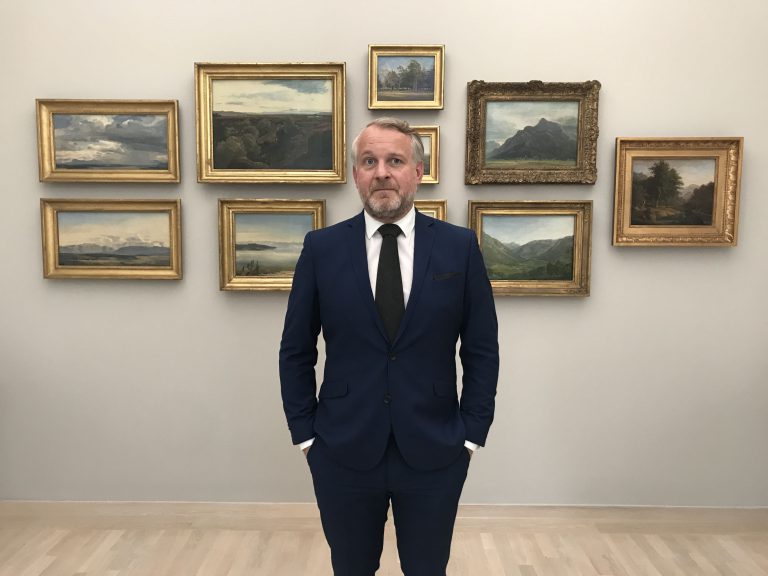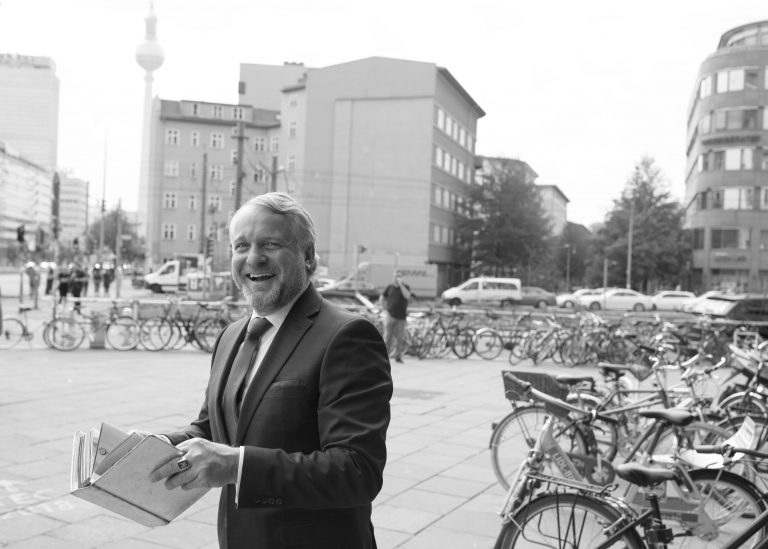On the necessity of culture
in turbulent times
by Prof. Dr. Thomas Girst
What is culture? It’s a refuge. A sanctuary of beauty and depth, of meaning and peace. A safe haven, far from the hustle and bustle of everyday life. Having said that, we enjoy indulging in distraction far too much. This turbo-capitalist “survival of the busiest” leaves us frozen in a frenzied standstill. Even though the current signs of the times call for us to pause, we prefer to continue to whirl around in blind activity. Instead of disappearing into the mass of like-minded people who meet our performance-driven world’s promise of success with the luxury of optimization, of better, richer, more beautiful, Marcel Duchamp once spoke of the lonely explosion of the individual who encounters themselves. This is the door that art can open.
Art renders the invisible visible, as Fabio Mauri said—thoughts and feelings, impressions and experiences.
None of us need ever be lonely, for we all stand on the shoulders of giants. We can send signals to each other like lighthouses along the coast at night. Across cultures and ages. This is how Charles Baudelaire once described it. We can communicate with each other through the accomplishments of art, music, and literature over decades, centuries, and even millennia. Culture is both an offering and a demand. Not necessarily for more morality, but for more empathy. A cantata by Bach might allow us to comprehend God, just as Dostoevsky’s Raskolnikov allows us to understand a murderer. And when the performance artist Marina Abramović and her partner Ulay walked toward each other along the Great Wall of China for four thousand kilometers over ninety days, only to separate forever in the moment they passed each other, then we know just how infinitely wonderful and devastating love can be.

Prof. Dr. Thomas Girst
© Andreas Krieger

Prof. Dr. Thomas Girst
© Oliver Mark
Was ist denn Kultur? Eben auch ein Refugium. Ein Hort der Schönheit und Tiefe, der Bedeutung und Ruhe. Ein Ort der Zuflucht fernab von Alltag und Hektik. Gleichwohl ergehen wir uns allzu gerne in Ablenkung. Das turbokapitalistische „Survival of the Busiest“ lässt uns im rasenden Stillstand verharren. Selbst wenn die Zeichen der jetzigen Zeit das Innehalten einfordern, ziehen wir es vor, uns weiterhin in blinder Geschäftigkeit zu überschlagen. Anstatt in der Masse Gleichgesinnter aufzugehen, die das Erfolgsversprechen unserer Leistungswelt im Optimierungsluxus eines Besser, Reicher, Schöner einlöst, sprach Marcel Duchamp einst von der einsamen Explosion des Individuums, das sich selbst begegnet. Genau diese Tür kann Kunst öffnen.
Kunst macht Unsichtbares sichtbar, wie Fabio Mauri sagte – Gedanken und Gefühle, Eindrücke und Erfahrungen.
Denn keiner von uns muss je einsam sein, wir alle stehen auf den Schultern von Giganten. Wir können einander Signale zusenden wie Leuchttürme entlang der nächtlichen Küste. Über Kulturen und Zeitalter hinweg. So beschrieb das dereinst Charles Baudelaire. Durch Jahrzehnte, Jahrhunderte, ja Jahrtausende hindurch vermögen wir über die Errungenschaften von Kunst, Musik und Literatur miteinander in Kontakt zu treten. Die Kultur ist dafür Angebot und Aufforderung zugleich. Nicht unbedingt für ein Mehr an Moral, sondern für ein Mehr an Empathie. Eine Kantate von Bach lässt uns womöglich Gott begreifen, so wie Dostojewskis Raskolnikow uns einen Mörder verstehen lässt. Und wenn sich die Performancekünstlerin Marina Abramović mit ihrem Lebenspartner Ulay auf der chinesischen Mauer über 90 Tage 4000 Kilometer entgegenlaufen, nur um sich im Augenblick des Vorübergehens für immer voneinander zu trennen, dann wissen wir gleichsam, wie unendlich wunderbar und verheerend die Liebe sein kann.
